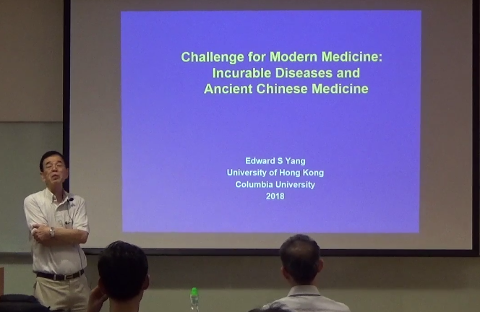
Chinese medicine is known as a low-cost alternative. The hardcore incurable diseases are mostly in cancers, neural and psychiatric disorders where Chinese medicine is usually not the people’s first choice. However, having limited success with modern drugs in the metropolitan research centres and hospitals, alternative medicine is attracting more and more patients even in the USA. We need to learn more about the science and reproducibility of the Chinese medicine.
Acupuncture and herbal medicine are two of the most unusual novel developments in the history of science or medical technology. Huang Di Nei Jing written in the second century BC followed closely by the Shang Hang Lun in the second century AD, both have stood the test of time and remain pretty much as what they were since their first publication. In acupuncture, we found even more surprising that its functions have been well explored and deployed but its mechanism is not understood for more than 2 millenniums. The difficulties come from two ancient medical terms, Qi and meridian neither is observable or measurable anatomically. Earlier research based on electrical model cannot explain the lack of addiction, pain, and side-effects, or the effectiveness of the sham acupuncture. Since the turn of the century, the evidences have turned out to be mechanical. In our studies, the experiments can be defined mathematically and measured precisely in acoustic shear waves. Central to our understanding is the needle movement that gives rise to activation of calcium ion channels and calcium waves. In this talk, we will first present data based on a vibrating needle in a mouse. The activation of calcium is displayed by the use of single-photon and 2-photon laser fluorescence with green fluorescent protein (GFP). But GFP cannot be used for human because of its toxicity. By serendipity, we found all needles inserted into the human body vibrate and the conversion of the vibration by Fourier transform provides the resonance frequency, thus tracking of resonant needles at the proper acu-points to show the basic signalling mechanism. These results are consistent with science and not in conflict with Huang Di Nei Jing, the foundational treatise of Chinese medicine.
Herbal recipe introduces a different kind of challenge. Since dozen or more plants, flowers or roots with molecules in the hundred in each decoction, tracking the chemical composition and toxicity can only be based on past clinical records or in the randomized controlled clinical trial first with animals before given to human subjects. In our case, our interest is in Amyotrophic Lateral Sclerosis (ALS), arguably the most challenging incurable disease. After obtaining the clinical record of 485 patients from a research clinic, screened to arrive at the complete and unambiguous patients, we presented the record to two world leaders in ALS research from Harvard and UMass Medical School, received their approval as well as a free trial with SOD1 transgenic mice. The test is incomplete. The original human patient record and the result of the trial will be reported. The process provides an indispensable experience for future options of how to handle clinical trials of these incurable disorders.
